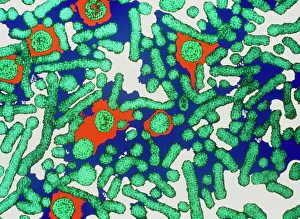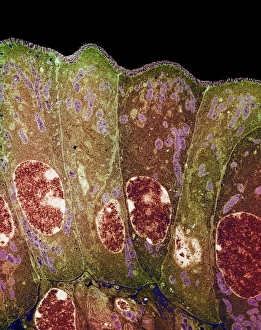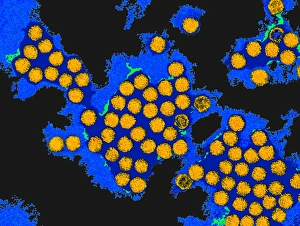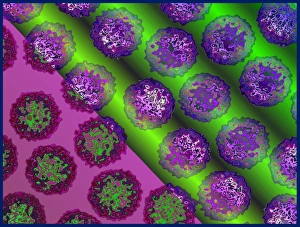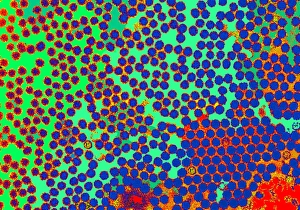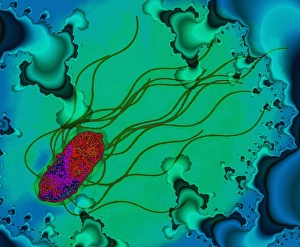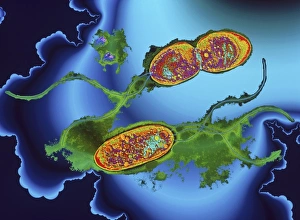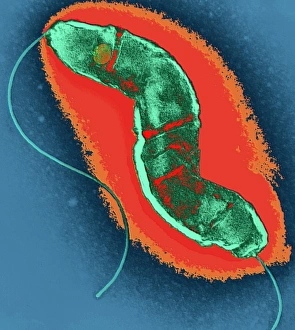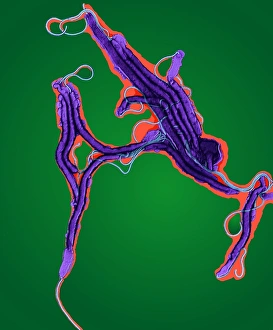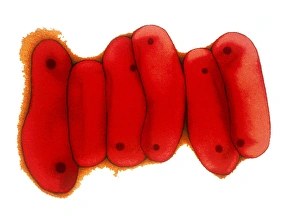Coloured Tem Collection
"Exploring the Vibrant World of Coloured TEM: Unveiling the Intricate Interactions between Hepatitis B and A Viruses, Insect Viruses
All Professionally Made to Order for Quick Shipping
"Exploring the Vibrant World of Coloured TEM: Unveiling the Intricate Interactions between Hepatitis B and A Viruses, Insect Viruses, and Mosaic Plant Viruses" In this captivating journey through a coloured transmission electron microscope (TEM), we delve into a mesmerizing realm where scientific wonders come to life. Our first stop takes us deep within the human body, as we witness the battle between Hepatitis B viruses and our immune system. The intricate dance of these tiny invaders unfolds before our eyes, as they attempt to infiltrate duodenal microvilli – delicate structures that line the small intestine. Moving further along in our exploration, we encounter another fascinating spectacle: duodenum secretory cells working tirelessly to protect us from harm. These remarkable cells secrete vital substances that aid digestion while warding off pathogens like Hepatitis B viruses. Their resilience is truly awe-inspiring. As we continue on this visual odyssey, new dimensions unfold before us. We observe with wonderment how Hepatitis A viruses take shape under the TEM's lens – their distinct features becoming more apparent with each passing moment. Alongside them are insect viruses; mysterious entities that have evolved alongside their hosts for millions of years. Our expedition doesn't end there. We venture into an entirely different domain – one where mosaic plant viruses thrive amidst lush greenery. Their vibrant colours create a breathtaking tapestry against nature's backdrop, reminding us of both their beauty and potential devastation to agricultural crops. But it's not just viral worlds that captivate our attention under the TEM's gaze; bacterial realms also reveal themselves in stunning detail. Salmonella bacterium emerges as an unwelcome intruder within its host environment - a stark reminder of foodborne illnesses plaguing communities worldwide. Finally, Stenotrophomonas sp. , bacteria known for their resistance to antibiotics, make an appearance under high magnification - showcasing both their tenacity and the challenges faced in combating their harmful effects.

